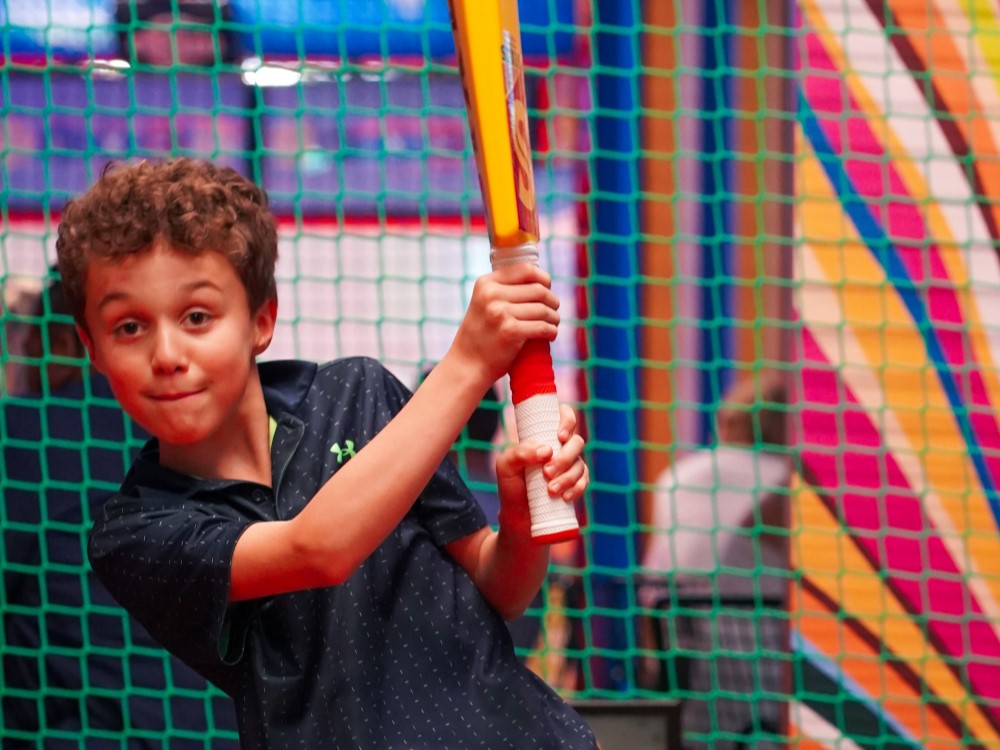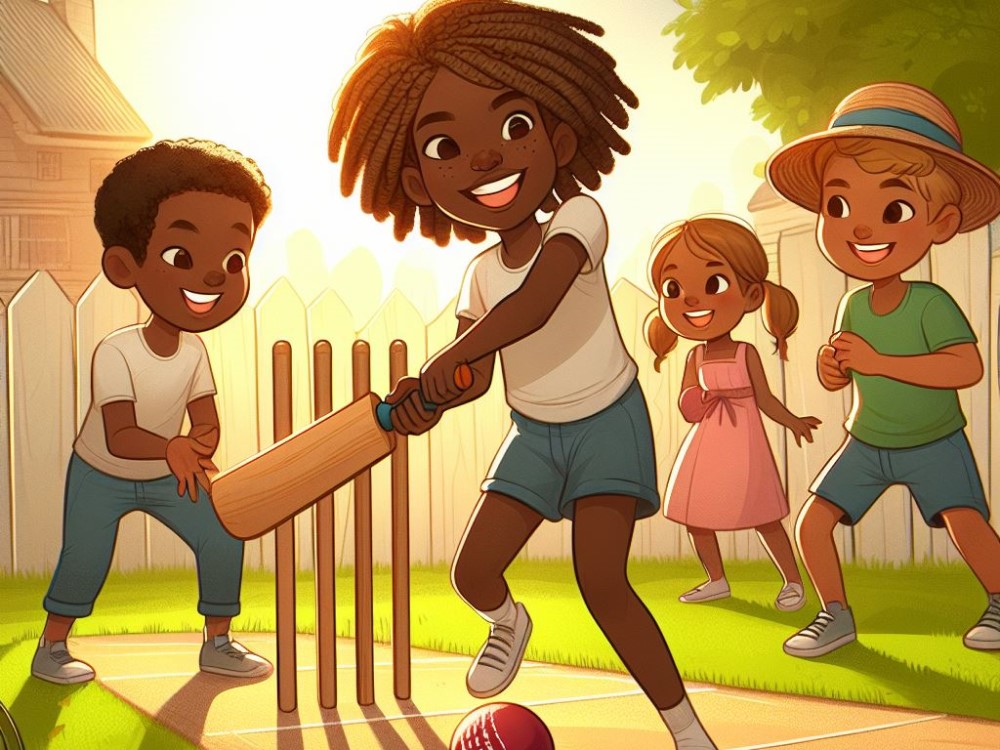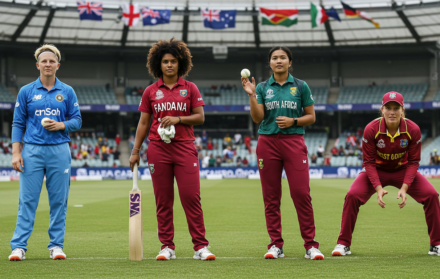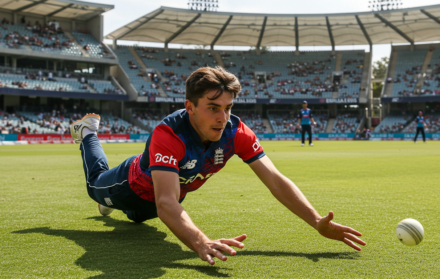
Fun Cricket Games and Activities for Children
Cricket, known for its strategic play and camaraderie, offers an array of cricket games and activities for children. These engaging pastimes aim to introduce youngsters to the sport’s fundamentals while fostering teamwork, coordination, and a passion for physical activity.
From simplified versions of the game to innovative drills, these activities cater to children of all ages and skill levels. In this article, we’ll explore a variety of fun cricket games and activities perfect for children, including traditional favorites like “Tip and Run” and “Sticky Wicket,” as well as creative drills such as “Catching in the Clouds” and “Bowling Target Practice.”
These games not only enhance cricketing skills but also promote values such as sportsmanship, resilience, and fair play. By incorporating these activities into physical education programs, community sports clubs, and family gatherings, we can inspire the next generation of cricket players and fans while ensuring the enduring spirit of the game.
Let’s uncover the joy of cricket through these exciting and accessible games and activities tailored for our youngest enthusiasts!
Why Sixes Cricket is a Hit with Kids

Sixes Cricket offers a unique and engaging approach to cricket, making it a fantastic option for children to experience the thrill of the game. Here’s why:
Action-Packed and Fast-Paced: Unlike traditional cricket, Sixes Cricket focuses on hitting sixes, the most exciting and high-scoring shot in the game. This keeps the activity dynamic and captivating for kids with shorter attention spans.
More Batting Time, More Fun: Sixes Cricket operates in a smaller playing area and uses a softer ball, ensuring safety for younger players. This allows them to focus primarily on batting, maximizing their opportunities to connect with the ball and experience the joy of hitting big shots.
Physical Activity and Fun Combined: Sixes Cricket still encourages physical activity through batting and the associated footwork and hand-eye coordination required. This provides a fun and social environment for children to stay active and develop their motor skills.
Beyond the Game: Sixes Cricket venues often offer restaurants or cafes with cricket-inspired food and drinks, adding another layer of fun and creating a unique cricket-themed experience for kids and families.
While Sixes Cricket deviates from the traditional format by focusing solely on batting, it maintains the core appeal of hitting sixes and the excitement associated with it. This, combined with the emphasis on participation, safety, and physical activity, makes it a perfect choice for children to develop a love for the game and create lasting memories.
Cricket Batting Practice
Cricket batting practice is of great importance when it comes to improving skills and technique. In order to have an effective batting practice, it is essential to follow the step-by-step guide presented below:
1. Warm-up: Begin with a gentle warm-up to prepare your body for the practice session.
2. Grip and stance: Make sure to have a correct grip on the bat and adopt a well-balanced position.
3. Footwork: Practice different types of footwork, including front and backfoot defense, as well as attacking shots.
4. Shot selection: Focus on choosing the right shots for various deliveries, such as straight drives, cover drives, pull shots, and cuts.
5. Timing and placement: Concentrate on timing the ball well and placing it in the gaps on the field.
6. Variety of deliveries: Incorporate a variety of deliveries into your practice sessions by having a partner or coach deliver fast, spin, and swing balls.
7. Taking singles and running between the wickets: Include running between the wickets and taking swift singles in your practice routine.
8. Visualization and mental focus: Practice mentally visualizing the ball as it approaches you and develop strong concentration.
Cricket Bowling Practice
When it comes to cricket bowling practice, key techniques and drills can enhance your skills on the cricket field. Here are effective exercises to improve your bowling abilities:
- Begin with a proper warm-up routine to prepare your body for the physical demands of bowling. This can involve stretches, jogging, and dynamic movements to warm up your muscles.
- Practice holding the ball correctly and work on different techniques for releasing it. Develop a diverse range of skills by practicing leg spin, off spin, fast bowling, and swing bowling.
- Arrange targets on the pitch and aim to consistently hit them. Start with large targets and gradually reduce the size to improve accuracy and precision.
- Bowl consistently in a specific line and length, aiming towards a specific spot on the pitch. This will help you develop the ability to consistently hit the right area and create pressure on the batsman.
- Change the pace of your deliveries to keep the batsman guessing. Practice bowling slower and faster deliveries to add variation to your game.
- Take into account the playing conditions. If the pitch is dry and dusty, practice bowling with more spin. If the pitch is green and seaming, focus on bowling with a good seam position.
Pro-tip: In addition to focusing on the technical aspects of bowling, pay attention to building strength and endurance. Incorporate regular fitness training to target your core, upper body, and leg muscles. Analyze your own bowling techniques by recording yourself and seeking feedback from coaches or experienced players to identify areas for improvement and refine your bowling style.
Cricket Fielding Drills

Improving cricket fielding skills is vital for success in the sport. To enhance your fielding abilities, here are some effective cricket fielding drills:
1. Ground Fielding Drill: Arrange cones in a straight line and practice fielding ground balls. Focus on fielding with your hands, throwing accurately, fielding with one hand, and practicing sliding and diving.
2. Catching Drill: Find a partner or coach to train with for catching drills. Stand facing each other and throw the ball back and forth at various heights and speeds. Pay attention to using both hands, getting into a good position, and cleanly taking the catch.
3. Boundary Fielding Drill: Set up cones to resemble the boundary line. Practice catching and throwing the ball back into play swiftly and accurately. Work on taking catches near the boundary, leaping to prevent sixes, and hitting the stumps to run out batsmen.
4. Slip Catch Drill: Stand close to the wicketkeeper and practice slip catching by taking catches off the edge of the bat. Focus on reacting quickly, moving swiftly to the ball, and securely holding onto the catch.
5. Throwing Drill: Set up targets at various distances and practice accurate throwing. Aim to consistently hit the stumps or your partner’s gloves. Concentrate on improving throwing accuracy and speed with your non-dominant hand.
Remember to prioritize proper technique, footwork, and agility during these drills. Regular and repetitive practice is crucial for improving fielding skills. Incorporating these cricket fielding drills into your training routine will help enhance your performance on the field.
Mini Cricket Matches
Mini cricket matches are a great way to introduce children to the sport and cultivate their skills and love for the game. When arranging these matches, it is important to keep in mind the following factors:
- Team formation: It is essential to divide the children into equal teams with a fair balance of skills.
- Playing area: It is recommended to set up a safe and smaller playing area, such as a backyard or a local park.
- Equipment: Make sure to provide suitable equipment based on the children’s age and size. This should include smaller bats, lightweight balls, stumps, and protective gear.
- Simple rules: It is important to explain the basic rules of batting, bowling, and fielding in a simplified manner that the children can understand.
- Rotate positions: It is highly encouraged to have the children play different positions to help them develop a well-rounded understanding of the game.
- Fun atmosphere: Creating a supportive and pressure-free environment that emphasizes teamwork and sportsmanship is crucial to ensure that the children enjoy themselves.
- Modified formats: Consider incorporating modified formats, such as 6-a-side or 8-a-side matches, for smaller teams.
- Varying match durations: Adjusting the duration of matches based on the children’s age and attention span is important. For younger children, shorter matches, such as 10-overs or 15-overs, are recommended.
By organizing mini cricket matches with these considerations in mind, children will have the opportunity to actively engage in the sport, improve their skills, and develop a lifelong passion for cricket.
Cricket Relay Races

Cricket relay races are an exciting and engaging activity that not only helps children enhance their cricket skills but also promotes teamwork and friendly competition. If you’re looking for ideas for cricket relay races, here are a few suggestions:
1. Ball Relay: Divide the children into teams and provide each team with a cricket ball. The first player in each team starts running with the ball and passes it to the next player. This passing continues until the last player crosses the finish line.
2. Wicket Relay: Set up a straight line of wickets. The players run towards a wicket, touch it, and then run back to tag the next player. The team that completes the relay race first becomes the winner.
3. Bat Relay: Assign each team a cricket bat. The first player runs to a specified point with the bat and then passes it to the next player. The bat keeps getting passed until the last player reaches the finish line with it.
4. Obstacle Course Relay: Create an obstacle course using cones, hoops, or other objects. Each player must navigate through the course while carrying a cricket ball or bat. The team with the fastest completion time emerges as the victor.
Cricket Treasure Hunt
A Cricket Treasure Hunt combines cricket and a treasure hunt. Here are the steps to organise the game:
1. Form teams: Divide the children into equal-sized teams, each with a captain.
2. Set boundaries: Mark out a playing area.
3. Hide treasures: Before the game, hide small treasures, like cricket equipment or toys, in various locations within the playing area.
4. Give clues: Provide each team with cricket-related riddles or directions to landmarks on the field.
5. Start the game: Once teams have their clues, the game begins. Teams must work together to solve the clues and find the treasures.
6. Play cricket: Along the way, have mini cricket matches to make the game more exciting. When a team finds a treasure, they can take a break and play a quick game of cricket.
7. Find all the treasures: The game continues until all the treasures have been found. The team that finds the most treasures within a specified time limit wins.
Cricket Bat and Ball Painting

Cricket bat and ball painting is a delightful endeavour for children to express their creativity and cultivate their adoration for the sport of cricket.
Materials: To engage in this activity, you will require a cricket bat, a cricket ball, acrylic paints, paintbrushes, water cups, and a protective cover or apron.
Preparation: Prior to commencing, ensure that the bat and ball are immaculate and dry. Employ newspaper or a plastic sheet to shield your workspace from paint splatters.
Design ideas: Encourage children to foster their inventiveness with their designs. They can decorate the bat and ball in the colours of their preferred team or devise distinctive patterns and motifs.
Painting technique: Initiate by applying a base coat of paint on the bat and ball. Allow it to dry prior to incorporating details and designs. Children can employ diverse brush sizes and techniques such as dabbing, swirling, or finger painting.
Drying and finishing touches: Once the painting is complete, allow the bat and ball to dry thoroughly. Consider applying a transparent coat or varnish to safeguard the artwork and prolong the paint’s lifespan during playtime.
Cricket Bat and Ball Painting not only offers an enjoyable pursuit but also enables children to personalize their cricket equipment, instilling a sense of ownership and pride. This activity can be savoured independently or as a group, affording children an opportunity to bond and exhibit their artistic aptitude. Oversee and guide children throughout the painting process to ensure safety and advance creativity. So, seize your brushes and paints, and let the cricket bat and ball painting commence!
Cricket Obstacle Course
A cricket obstacle course can greatly improve children’s cricket skills and agility. Here are some fantastic ideas for creating a challenging course:
- Begin by setting up a zigzag path using cones specifically for dribbling a cricket ball.
- Introduce hurdles or obstacles for jumping while running between the wickets.
- Construct a tunnel comprised of collapsible hoops or cones where the participants can crawl with a cricket bat.
- Designate a target area for throwing and hitting a designated spot.
- Incorporate a balance beam or a narrow plank for participants to walk on while balancing a cricket ball on a bat.
- Create a slalom course involving cones for running and dribbling.
- Introduce a catching challenge where participants need to catch a thrown ball while navigating obstacles.
- Finish the course with a sprint to showcase speed and agility.
Always remember to adjust the difficulty level based on the age and skill of the participants. It is crucial to provide clear instructions and demonstrations to ensure safety. Encourage friendly competition and offer positive feedback to boost confidence.
By incorporating this cricket obstacle course, children can effectively develop their cricket skills and physical abilities in a fun and interactive way.
Cricket Target Practice

To enhance your cricket skills and accuracy in hitting targets, it is essential to engage in cricket target practice. Here are some effective methods to improve your aim and precision:
1. Establish a target area: Create a dedicated area for target practice, such as a boundary line or marked section on a wall. This will help you focus on hitting specific spots.
2. Use cones or markers: Place cones or markers at various distances within the target area. This provides multiple targets to aim for and enhances your ability to hit specific points.
3. Vary the target sizes: Use different target sizes, such as small circles, squares, or cutouts of cricket stumps. This will test your accuracy and adaptability in hitting different spots.
4. Practice different shots: Attempt hitting the targets using a variety of cricket shots, including straight drives, cuts, and pulls. This will aid in the development of your target-hitting skills across different shot types.
5. Set time limits: Challenge yourself by setting time limits for hitting specific targets. This will improve your decision-making abilities and quicken your reflexes.
By incorporating these cricket target practice techniques, you can refine your skills and become more precise in hitting targets. Remember to focus on both your accuracy and speed to excel in the game.
So, grab your cricket bat and commence practicing your target-hitting skills to become a more accomplished cricketer.
How to Play Cricket: Basic Rules and Skills
Learning cricket involves understanding the rules and developing the necessary skills. Here is a guide on “How to Play Cricket: Basic Rules and Skills” to get started:
1. Form two teams: Cricket is played between two teams, with eleven players on each team. One team bats, and the other fields.
2. Toss the coin: Before the game starts, one team captain tosses a coin, and the other captain calls heads or tails. The winning captain chooses whether to bat or field.
3. Start with batting: The batting team sends two players to the pitch, while the rest of the team waits off the field. The opposing team’s bowler throws the ball towards the batsman. The batsman tries to hit the ball and score runs by running between the stumps at each end of the pitch.
4. Fielding and bowling: The team not batting takes turns fielding and bowling. The bowler aims to get the batsman out by hitting the stumps behind them or by catching the ball after the batsman hits it. The fielders support the bowler in preventing the batting team from scoring runs.
5. Rotate the batting and fielding teams: Once the batting team loses ten wickets or finishes their agreed-upon number of overs, the teams switch roles. The previous fielding team now bats, and the previous batting team fields.
6. Score runs and take wickets: The batting team aims to score as many runs as possible, while the fielding team aims to get all the batsmen out. The team with the most runs at the end of the game wins.
Remember, cricket is a complex game, and it may take time to fully grasp all the rules and develop the required skills. Practice and experience will help improve understanding and performance.
What Equipment Do You Need for Cricket?

When it comes to the sport of cricket, one must have the necessary equipment. This comprises a wooden cricket bat with a flat surface known as the blade. On the other hand, a solid cricket ball is made of cork and leather. Stumps, which consist of three vertical wooden posts, have bails placed on top.
Safety is paramount, so players should wear protective gear including a helmet, pads, gloves, and an abdominal guard. In order to gain traction and maintain stability, it is important to wear cricket shoes. For longer formats of the game, players typically wear white clothing, while limited-overs matches call for colored jerseys.
A cricket bag is used to carry all the essential equipment, and a scorebook and pen are necessary for keeping track of statistics. Staying hydrated during play is crucial, hence why a water bottle should always be easily accessible.
Umpires may require a coat, hat, and signals to effectively carry out their duties. To have a safe and enjoyable cricket experience, it is important to select equipment suitable for your age, skill level, and the specific format of play.
How to Play a Cricket Match?
If you want to learn how to play a cricket match, follow these guidelines:
1. Form teams: Gather players and divide them into two evenly matched teams.
2. Choose captains: Select a leader for each team.
3. Coin toss: Conduct a coin toss to determine which team will bat first.
4. Batting team: Send two players, known as batsmen, onto the field.
5. Bowling team: Assign a player as the bowler.
6. Start the game: The bowler delivers the first ball to the batsman.
7. Scoring runs: Batsmen earn runs by hitting the ball and running between the wickets.
8. Dismissing players: The bowling team tries to eliminate the batsmen.
9. Switching roles: Once a certain number of overs or batsmen have been dismissed, the teams exchange roles.
10. Sustain the match: The game continues until the predetermined number of overs or wickets is reached.
The sport of cricket originated in 16th century England and became popular among adults. The first official cricket match was recorded in 1697.
What Are the Different Formats of Cricket?

The formats of cricket are as follows:
- Test Match: It is the longest format of cricket, played over five days. Each team bats and bowls twice, and the team with the highest total runs wins.
- One-Day International: This format is played in a single day, with each team having 50 overs to bat and bowl. The team with the highest total runs at the end wins.
- Twenty20: Also known as T20, this format is the shortest and most fast-paced. Each team has 20 overs to bat and bowl. The team with the highest total runs wins.
- The Hundred: Introduced recently, this format involves 100 balls per innings, with each team batting for 100 balls. It is played in around two and a half hours.
- T10: This is an even shorter format, with each team batting for 10 overs. It is known for high-scoring matches and quick pace.
Different formats of cricket offer excitement and engagement for players and spectators. Each format has unique rules and strategies, making cricket a versatile and adaptable sport.
Fact: The Twenty20 format revolutionised cricket by introducing a shorter and more thrilling version of the game. It has significantly increased the popularity of cricket worldwide, attracting a wider audience and making the sport more accessible to all.





